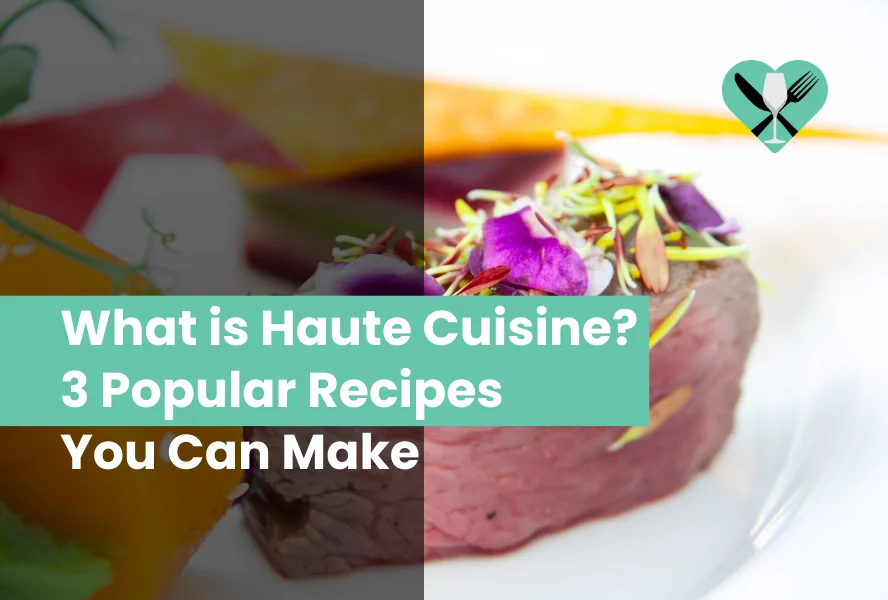Understanding Haute Cuisine
Haute Cuisine, often referred to as “high cooking,” is a culinary tradition that emphasises the artistry and sophistication of food preparation. Originating in France, Haute Cuisine is characterised by its use of high-quality ingredients, meticulous preparation techniques, and elegant presentation. This culinary style has a rich history and is renowned for its complex flavours and artistic presentation.
Historical Background
The roots of Haute Cuisine can be traced back to the 17th century, during the reign of King Louis XIV. The opulent and extravagant dining practices of the French nobility played a significant role in shaping Haute Cuisine. At this time, French chefs began to develop elaborate dishes that were not only meant to satisfy hunger but also to impress and delight the senses.
One of the most influential figures in the evolution of Haute Cuisine was Marie-Antoine Carême, a 19th-century French chef known as the “King of Chefs.” Carême was renowned for his elaborate presentations and the development of techniques that elevated French cuisine to new heights. His work laid the foundation for the refinement and sophistication that define Haute Cuisine today.
In the 20th century, Haute Cuisine continued to evolve with the influence of modern culinary techniques and global ingredients. Renowned chefs like Auguste Escoffier and Paul Bocuse further refined the style, incorporating innovation while maintaining the core principles of precision and elegance.

Characteristics of Haute Cuisine
Haute Cuisine is distinguished by several key characteristics:
1. Quality Ingredients:
The use of the finest and freshest ingredients is paramount. Haute Cuisine often features rare or luxurious ingredients like truffles, foie gras, and caviar.
2. Elaborate Preparation:
Dishes are prepared with great attention to detail. Techniques such as sous-vide cooking, precise sauces, and artistic plating are commonly employed.
3. Elegant Presentation:
The visual appeal of the dish is as important as its taste. Haute Cuisine often features intricate presentations and artistic garnishes.
4. Creativity and Innovation:
While rooted in tradition, Haute Cuisine embraces creativity and innovation. Chefs experiment with new techniques, flavours, and combinations to create unique dining experiences.
5. Exquisite Service:
The dining experience in Haute Cuisine restaurants often includes attentive service, with a focus on providing a memorable and refined experience.
Popular Haute Cuisine Recipes You Can Make
While Haute Cuisine is often associated with high-end restaurants and fine dining establishments, you can bring a touch of sophistication to your own kitchen with some classic recipes. Here are a few popular Haute Cuisine dishes you can try at home:
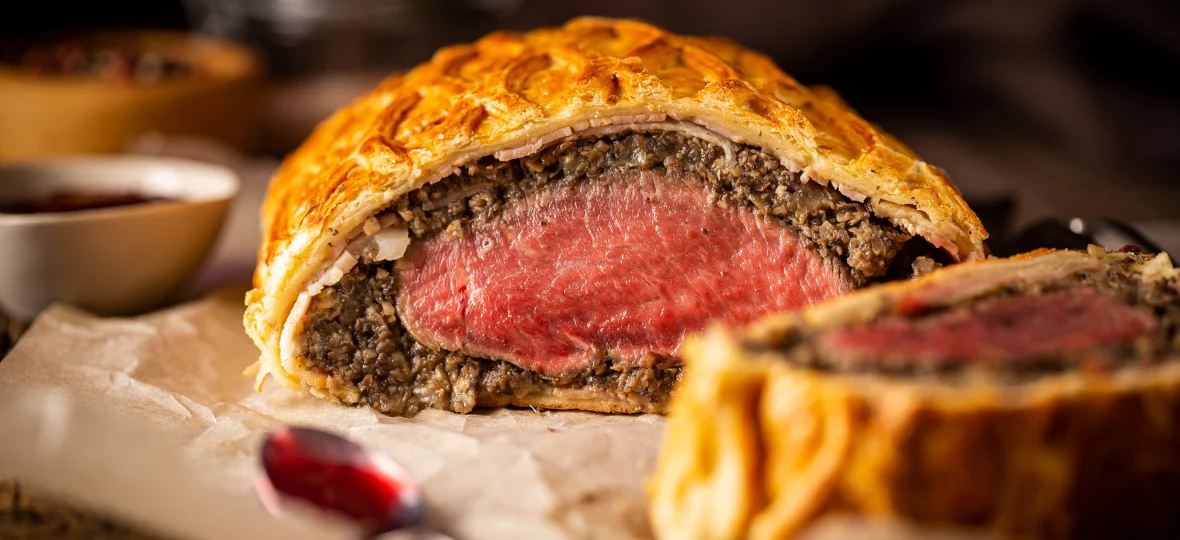
1. Beef Wellington
Ingredients:
2 lb beef tenderloin
Salt and pepper to taste
2 tbsp olive oil
2 tbsp Dijon mustard
8 oz cremini mushrooms, finely chopped
2 cloves garlic, minced
1 shallot, finely chopped
1/4 cup dry white wine
1/4 cup heavy cream
8 slices prosciutto
1 sheet puff pastry, thawed
1 egg, beaten (for egg wash)
Instructions:
1. Heat your oven to 400°F (200°C).
2. Season the beef with salt and pepper. In a hot skillet, brown the beef on all sides using olive oil. Let it cool, then coat it with mustard.
3. In the same skillet, cook mushrooms, garlic, and shallot until they lose moisture and become golden. Pour in the wine and cook until it’s gone. Stir in the cream and let it thicken. Cool the mixture.
4. Lay prosciutto slices on plastic wrap, overlapping them slightly. Spread the mushroom mix over the prosciutto. Place the beef on top and wrap tightly with the plastic. Chill for 15 minutes.
5. Roll out the puff pastry on a floured surface. Remove the plastic wrap from the beef and place it on the pastry. Wrap the pastry around the beef and seal the edges. Brush with the beaten egg.
6. Put the wrapped beef on a baking sheet and bake for 25-30 minutes until the pastry is golden and the beef is cooked to your liking. Let it rest for 10 minutes before slicing.
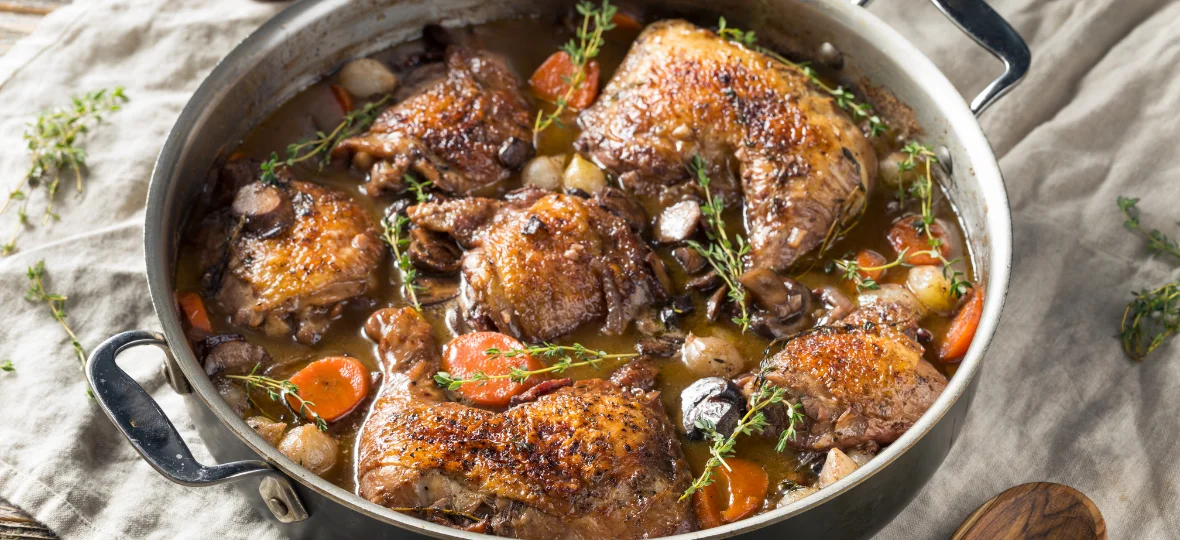
2. Coq au Vin
Ingredients:
1 whole chicken, cut into pieces
Salt and pepper to taste
2 tbsp olive oil
1/2 cup diced bacon
1 onion, chopped
2 cloves garlic, minced
2 cups red wine
1 cup chicken broth
1 tbsp tomato paste
2 sprigs fresh thyme
1 bay leaf
1 cup button mushrooms, sliced
1 cup pearl onions, peeled
2 tbsp all-purpose flour (optional, for thickening)
Instructions:
1. Sprinkle salt and pepper on the chicken pieces. Warm olive oil in a sizable Dutch oven over medium-high flame. Sear the chicken on all sides until browned, then remove and set aside.
2. In the same pot, cook the bacon until it becomes crispy. Take out the bacon and set it aside. Add the onions and garlic to the pot, cooking them until they become soft.
3. Place the chicken back into the pot and pour in the wine, chicken broth, tomato paste, thyme, and bay leaf. Bring the mixture to a boil, then lower the heat and let it simmer for 45 minutes.
4. Add the mushrooms and pearl onions to the pot, continuing to simmer for an additional 15 minutes, or until the chicken is tender and the sauce has thickened. If desired, create a slurry by mixing flour with a bit of water and stir it into the sauce to thicken.
5. Serve the Coq au Vin with crusty bread or atop mashed potatoes.
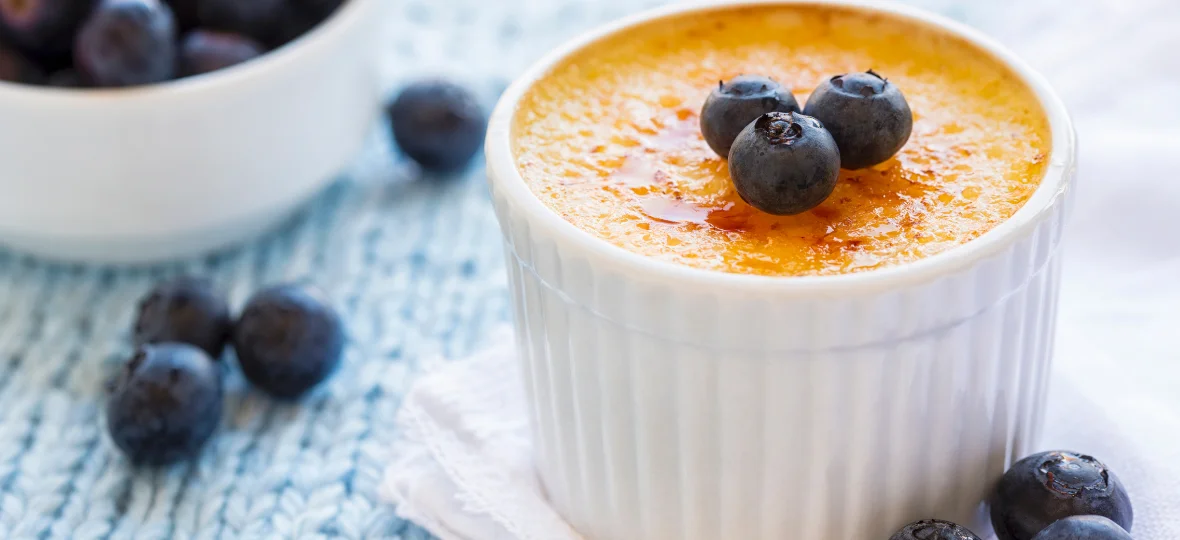
3. Crème Brûlée
Ingredients:
2 cups heavy cream
1 vanilla bean (or 1 tbsp vanilla extract)
5 large egg yolks
1/2 cup granulated sugar
1/4 cup brown sugar (for caramelising)
Instructions:
1, Set the oven to preheat at 325°F (160°C). Arrange the ramekins in a baking dish.
2, In a saucepan, heat the cream and vanilla bean (or extract) until it just starts to boil. Remove from the heat and let it infuse for 10 minutes. If using a vanilla bean, scrape the seeds into the cream.
3, In a bowl, whisk together the egg yolks and granulated sugar until the mixture is pale and thick. Slowly incorporate the warm cream mixture into the egg mixture while whisking continuously.
4, Pass the custard through a fine-mesh sieve into a clean bowl to strain it. Pour the custard into the ramekins.
5, Fill the baking dish with hot water until it comes halfway up the sides of the ramekins. Bake for 40-45 minutes, or until the custards are set but still slightly wobbly in the centre.
5, Allow the custards to cool to room temperature, then refrigerate for a minimum of 2 hours. Before serving, sprinkle brown sugar on top and caramelise using a kitchen torch or under the broiler.
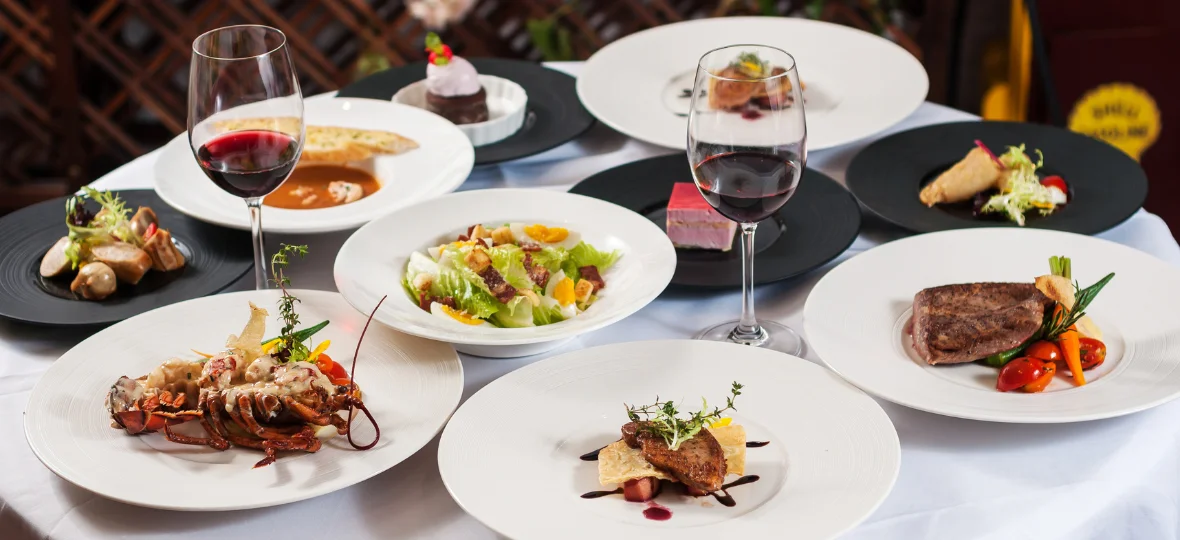
Embracing Haute Cuisine at Home
Creating Haute Cuisine dishes at home can be a rewarding experience. By focusing on quality ingredients, precise techniques, and elegant presentation, you can bring a touch of sophistication to your meals. Whether you’re preparing a classic Beef Wellington, a comforting Coq au Vin, or a delicate Crème Brûlée, embracing Haute Cuisine principles can elevate your culinary skills and create memorable dining experiences.
Pinnacle of Culinary Artistry
Haute Cuisine represents the pinnacle of culinary artistry and sophistication. With its rich history and emphasis on high-quality ingredients and meticulous preparation, it continues to inspire chefs and home cooks alike. By exploring Haute Cuisine recipes and techniques, you can bring a touch of elegance to your own kitchen and enjoy the artistry of fine dining at home.
Read More:
List of Top 10 British Cuisines
Zimbabwe Food: Top 10 Cuisines You Don’t Want to Miss

